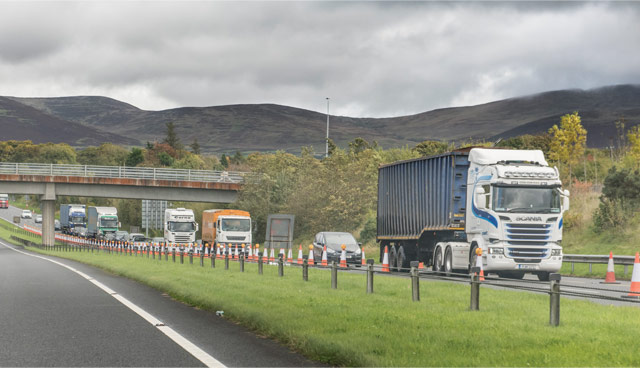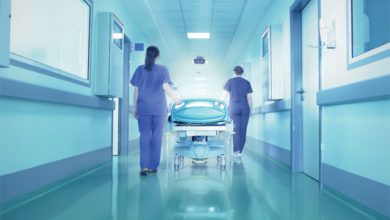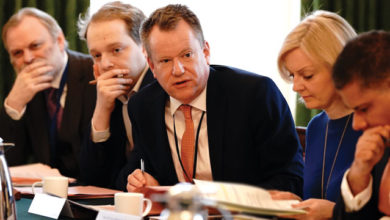Border remains open in British Government’s no deal plan

No new regulatory checks or controls would be introduced to Northern Ireland’s border with the Republic of Ireland under the British Government’s tariff plan for a no deal Brexit, which places tariffs on agriculture imports, but leaves other industries wide open to price races against tariff-free imports.
The Government’s “strictly temporary, unilateral approach” for no checks or controls on the border, with tariffs set to be payable on goods entering the UK from the EU via Northern Ireland, “almost certainly” violates World Trade Organisation (WTO) rules, Alan Winters, Director of the UK Trade Policy Observatory at the University of Sussex, told the BBC.
In the scenario of a no deal Brexit, the UK would automatically revert to WTO trading rules, which it would violate by not placing checks on the border, thus giving the EU favourable status over other trading partners, Winters argues.
Under WTO rules, the UK could only alter rates and rules for countries or trading blocs that it has a deal with,
precisely what would be missing in a no deal scenario.
The plan also includes a “small number” of checks in the interest of public and animal health and safety for goods travelling from Northern Ireland to Great Britain, but these checks will not occur at an Irish Sea border as had previously been rumoured. These checks would happen at “designated entry points”.
The temporary schedule outlined for tariffs in the plan, initially expected to last one year, would see the market face a small liberalisation, with the proportion of tariff-free imports entering the UK rise from an estimated 80-82 per cent before Brexit to 87 per cent after a no deal exit. The new tariff administration would heavily favour non-EU countries, with the quantity of imports without tariffs rising greatly from 56 per cent to 92 per cent. Tariff-free imports from the EU would fall from 100 per cent to 82 per cent.
An estimation by the UK Trade Policy Observatory found that the plan will see almost 72 per cent of the UK’s most favoured nation tariff lines suffer from reduced protection and the UK’s average most favoured nation tariff reduced drastically, from around 7.7 per cent to 0.7 percent.
While the EU remains by far the biggest export market for the UK, it is does not account for the same amount of the UK’s export share as it once did. 44 per cent of UK exports went to the EU in 2017, significantly down from 55 per cent in 2006. Just 7 per cent of EU exports go to the UK, meaning that, despite the UK having a trade surplus with the rest of the EU, the UK is far more dependent on the EU than the EU is on the UK in trade terms.
WTO rules allow members to strike individual trade deals together, but in their absence WTO default tariffs are used. The UK Government is currently said to be in negotiations with many fellow WTO members to reach such deals, mostly said to be replications of EU deals with such states/blocs. Former Brexit Minister David Davis MP had previously said there was “no reason why many of these trade deals” would not be concluded within the two years between the Brexit vote and original deadline, but has recently admitted that none will be completed in time.
WTO tariffs, or the lack thereof, would have wide-ranging effects on native British industry and customers. Volkswagen have already said that the increased cost of a 10.8 per cent tariff applied to fully finished cars from the EU will be passed onto the consumer, to the tune of an extra £1,500 for a typical family car. Despite completed cars having tariffs placed upon them, car parts will not. In practical terms, this means that importing a Volkswagen Golf will incur a 10.8 per cent fee, but importing an engine for that Golf could be done free of any extra charge. This scenario could spell danger for plants in Britain assembling parts for foreign-based car manufacturers. Most UK-based car production is exported, with parts imported, leaving the sector particularly vulnerable.
“Despite completed cars having tariffs placed upon them, car parts will not. In practical terms, this means that importing a Volkswagen Golf will incur a 10.8 per cent fee, but importing an engine for that Golf could be done free of any extra charge.”
The deal’s effect on agriculture is projected to be a mixed bag, with tariff protections put in place for beef, lamb, poultry and some dairy, but absent for fruit, vegetables, eggs and cereals. The average EU tariff for non-agricultural products is 2.8 per cent, but tariffs are significantly higher for agricultural products. Jams, jellies and marmalades are tariffed at 24 per cent, oranges at 16 per cent, onions at 9.6 per cent and peas at 8 per cent; in the plan all of these tariffs would fall to zero.
The plan will impose the existing EU tariffs on all beef and lamb imports, whether from the EU or further abound, creating a 7 per cent rise in the price of beef. General duties on pork products, milk and cheese will be retained, but cheddar cheese is projected to rise by almost £20 per 100kg. Tariffs will also be set on products such as sugar to maintain special duty-free access to developing countries. Other foods will also be impacted heavily, with tuna set to have a 24 per cent tariff imposed on it.
Clothing also appears to be an area that will be badly affected, with imports of men’s wool jackets facing tariffs of 12 per cent. Men’s, women’s and children’s underwear, nightshirts/nightdresses, t-shirts, bathrobes and jumpers made from man-made materials all face 12 per cent tariffs also.
Five per cent of tariff lines will retain their tariffs, the Government has said. 2.8 per cent of these will stay at existing EU rates and the remaining 2.2 per cent will face reduction. Tariff reductions on this 2.2 per cent appear based on extents of the existing EU tariffs, with variances per product group.
The industries most protected by tariff lines are meat, which has over 140 non-zero tariff lines (115 of which are below EU rates), vehicles, with 70 non-zero lines, and non-knitted or crocheted apparel, which has 50 non-zero lines.
The Government’s plan appears to be attempting something very challenging by balancing a wish to liberalise Britain’s market (a key cornerstone of pro-Brexit arguments) and protect traditionally native industries typically based in Brexit-voting regional towns such as agriculture, car manufacturing and textiles.
What effect these measures could have on the areas opened up to increased competition by the wiping out of tariff protections will only be truly seen when, or if, Brexit comes to pass and when a deal, or lack thereof, is confirmed.





